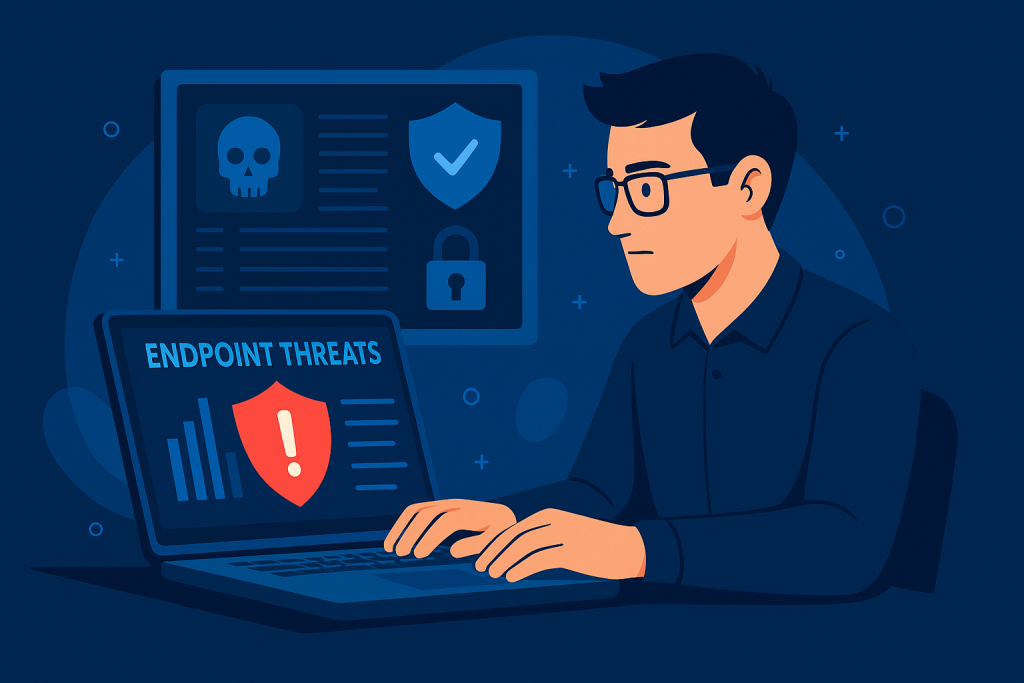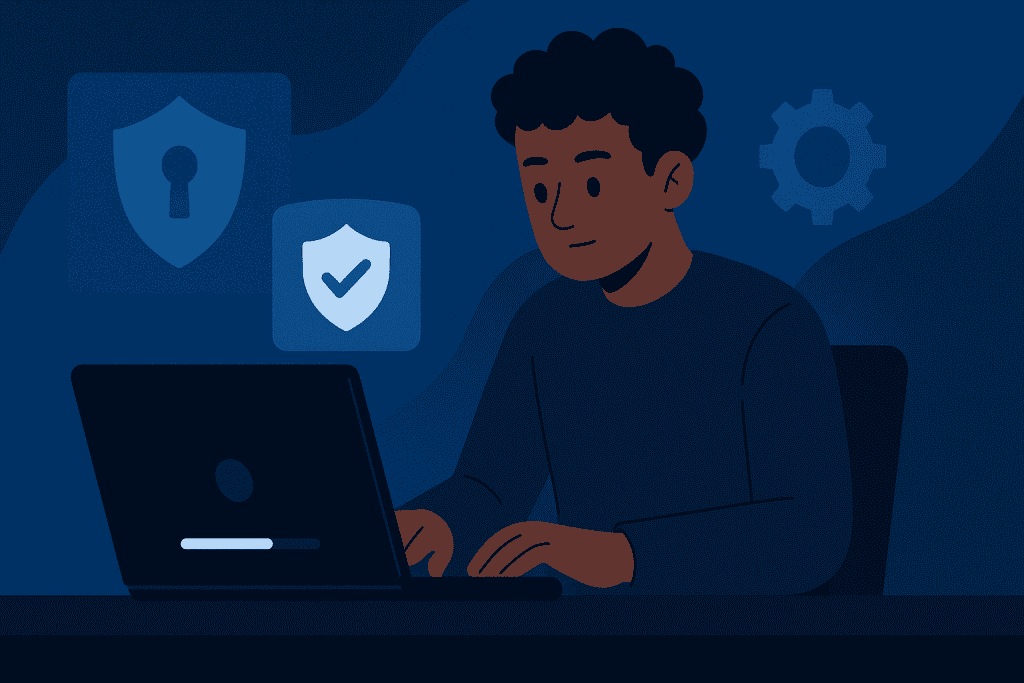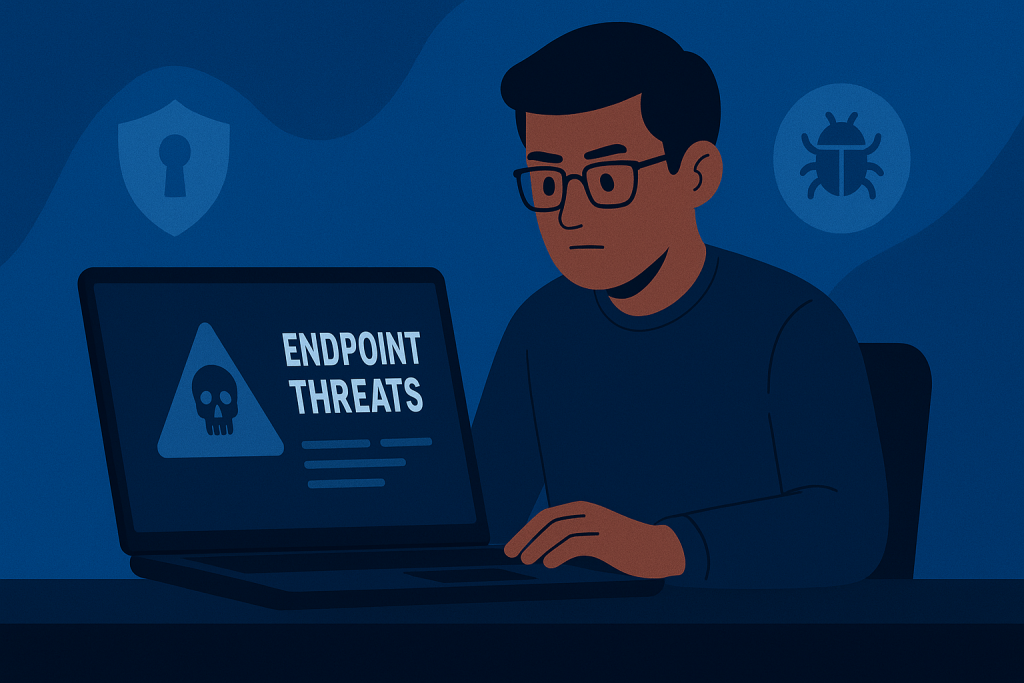In today’s hyper-connected world, Endpoint Protection isn’t just nice to have—it’s your frontline defense. Every phone, laptop, tablet, or workstation that connects to a network is a potential weak spot. These devices, called “endpoints,” are prime targets for hackers looking to exploit vulnerabilities and gain access to sensitive data.
This matters in every industry. From healthcare and education to finance and small business, no organization is immune. The shift to remote work has only made the threat landscape more complex. Attackers don’t need to break into your office—they just need to compromise one employee’s laptop.
Understanding this means recognizing the importance of proactive defense. With threats evolving—ransomware, phishing, deepfakes, spyware, and more—your defense needs to evolve, too. This blog will guide you through what endpoint protection really means, how it works, its different types, and how it’s used in the real world.
What is Endpoint Protection?
Endpoint Protection is a cybersecurity strategy designed to secure individual devices (endpoints) that access a network. These include computers, phones, servers, and even IoT gadgets. The goal is to prevent threats from entering your system through these access points.
It’s also called Endpoint Security or EPP (Endpoint Protection Platform). While antivirus software is one part of it, this is goes much further. It combines various tools—like firewalls, behavior monitoring, threat intelligence, and more—to detect and block malicious activity in real time.
Think of it as digital armor for your devices. When set up correctly, it doesn’t just protect the endpoint itself; it safeguards the entire network.
Breaking Down Endpoint Protection
So, what exactly does it do? It’s more than just installing software and hoping for the best. Modern endpoint protection is a layered defense system built to handle complex cyber threats before, during, and after an attack.

Core Features
- Antivirus & Anti-malware: These scan for and remove known malicious software.
- Firewall: Acts like a digital bouncer—blocking suspicious inbound and outbound traffic.
- Intrusion Prevention Systems (IPS): Detect and stop unauthorized access attempts.
- Device Control: Blocks unapproved USB drives, preventing hacking via rogue devices.
- Patch Management: Ensures software stays up to date to fix vulnerabilities—especially useful when a Windows Update gets missed.
- Data Encryption: Secures data on lost or stolen devices, making it unreadable to outsiders.
- Behavioral Analytics: Detects unusual activity—like a program suddenly trying to access all your documents—and takes action before damage is done.
- Cloud-based Threat Intelligence: Shares real-time data about emerging threats across users globally.
Example:
Let’s say an employee unknowingly clicks on a phishing email. Without endpoint protection, that malware could steal login credentials, encrypt files, or spread through your network like wildfire. But with a robust EPP in place, the system detects the abnormal activity, isolates the device, blocks the suspicious process, and notifies IT instantly.
Why does this matter? Because threats today don’t always come with warning signs. Ransomware, fileless malware, and zero-day exploits often act silently and swiftly. Manual defense isn’t fast enough. You need an automated system that never sleeps.
And here’s the key: endpoint protection works wherever your people are. Whether they’re working from home, traveling abroad, or sitting in your office, their devices—and your data—stay protected.
History
Endpoint protection has its roots in the early days of personal computing. Back then, threats were simple—mostly viruses spread by floppy disks or email attachments. Basic antivirus tools were enough. But as the internet expanded and businesses went digital, so did the complexity of attacks.

By the mid-2000s, malware evolved into sophisticated campaigns targeting data and infrastructure. Cybercriminals were no longer lone hackers in basements; they became organized groups using advanced techniques. This shift demanded stronger tools. The result was the birth of Endpoint Protection Platforms (EPPs), combining antivirus, firewalls, and behavioral analytics.
The move to cloud computing and remote work in the 2020s only accelerated the need for smarter, faster protection. Today, endpoint security is powered by AI and machine learning, giving businesses the ability to detect and stop threats before they cause damage.
| Year | Milestone |
|---|---|
| 1987 | First antivirus software released to the public |
| 2000s | Rise of spyware and trojans forces expansion beyond antivirus |
| 2010 | Emergence of Endpoint Protection Platforms (EPPs) |
| 2015 | Cloud-based management becomes standard |
| 2020 | Surge in remote work increases demand |
| 2023 | AI-driven, behavior-based EPPs become the norm |
Today’s systems are smarter, faster, and proactive. They don’t just react to threats—they anticipate them.
Types of Endpoint Protection
Not all endpoint protection is created equal. Different types of tools serve different needs depending on your organization’s size, industry, and risk level. Below are the main variations of endpoint protection, including advanced options for modern businesses.
Traditional Antivirus
This is the most basic form of endpoint protection. It uses signature-based detection to identify known malware. While it’s fast and lightweight, it struggles with new or unknown threats because it can’t detect anything it hasn’t “seen” before.
Best for: Individuals and very small businesses with limited exposure to advanced threats.
Endpoint Detection and Response (EDR)
EDR systems monitor devices continuously. They track events, flag suspicious behavior, and provide tools for investigation and response. Unlike traditional antivirus, EDR doesn’t just prevent—it helps detect and fix problems quickly.
Best for: Medium to large businesses, especially those with in-house IT or security teams.
Unified Endpoint Management (UEM)
UEM combines endpoint protection with device management. It helps organizations configure, monitor, and secure devices across various operating systems—from Windows to Android to macOS—all from one dashboard.
Best for: Enterprises managing a large and diverse fleet of devices, such as BYOD (bring your own device) environments.
Cloud-Based Endpoint Protection Platforms
These solutions operate via the cloud, offering centralized visibility and real-time protection for distributed teams. Because everything is updated in real-time, it’s ideal for remote or hybrid workplaces.
Best for: Businesses with remote workers, satellite offices, or limited internal IT resources.
Next-Gen Antivirus (NGAV)
NGAV goes beyond traditional antivirus. It uses machine learning and AI to detect threats without needing predefined signatures. This allows it to block zero-day attacks, fileless malware, and evasive threats that older systems would miss.
Best for: Organizations seeking proactive protection against unknown and evolving threats.
Managed Detection and Response (MDR)
MDR takes EDR a step further. It includes a dedicated team of security experts who monitor your endpoints 24/7. They respond to threats in real time, reducing the need for a full in-house SOC (Security Operations Center).
Best for: Businesses that want top-tier protection but lack the staff or resources for 24/7 internal monitoring.
| Type | Description | Best For |
|---|---|---|
| Traditional Antivirus | Detects and removes known threats using signature-based methods | Home users, very small businesses |
| Endpoint Detection (EDR) | Detects, investigates, and responds to suspicious behavior | Mid-size to large companies with security staff |
| Unified Endpoint (UEM) | Combines device management and security into one platform | Enterprises with varied devices |
| Cloud-Based EPP | Real-time cloud-managed security for endpoints | Remote and hybrid teams |
| Next-Gen Antivirus (NGAV) | AI-driven protection against zero-day and evasive threats | High-risk industries and evolving threat models |
| Managed Detection (MDR) | 24/7 expert-led monitoring and response | Organizations needing round-the-clock support |
How Does it Work?
When a device connects to your network, endpoint protection gets to work. It continuously scans for signs of trouble—like malicious files, unauthorized access attempts, or unexpected system behavior.

If it detects something suspicious, it acts immediately. The system might quarantine a file, block network access, or notify your IT team. Cloud-based systems update themselves constantly, pulling new threat data from global sources to stay ahead of attackers.
This real-time response is key. In many cases, endpoint protection can neutralize a threat before a user even realizes something was wrong.
Pros & Cons
Endpoint protection is powerful, but it’s not perfect. Let’s take a look:
| Pros | Cons |
|---|---|
| Real-time protection from malware, phishing, and cyber threats | Can strain system resources on older machines |
| Automates threat response and reduces downtime | False positives can disrupt work |
| Supports compliance with privacy laws and standards | Advanced features may require training |
| Scalable for any organization size | Cost varies by feature set |
| Helps manage remote teams securely | May need VPNs or tools like Express VPN for full coverage |
Uses of Endpoint Protection
It is used across industries—and for good reason. Every organization with internet-connected devices is a potential target.
Healthcare
Medical records are a goldmine for hackers. Endpoint protection helps hospitals and clinics meet compliance standards like HIPAA and protect against ransomware.
Example: A small clinic avoided a ransomware lockdown when its EPP flagged a suspicious file and auto-quarantined it before it could spread.
Finance
Banks and financial institutions store highly sensitive data. Endpoint protection ensures customer information and transaction details remain safe.
Example: A credit union stopped a keylogger malware attack thanks to behavior-based analytics built into their endpoint system.
Education
With more schools using digital classrooms, endpoint protection safeguards student data and blocks malware that spreads via email or cloud drives.
Example: A university deployed UEM to manage and secure laptops distributed to students during a remote learning semester.
Retail
Point-of-sale systems are frequent targets. It defends against POS malware, protects customer data, and ensures smooth operations.
Example: A chain of convenience stores used cloud-based EPP to lock down all checkout devices during a nationwide rollout.
Remote Work
This is where endpoint protection shines. Employees working from home are often outside the reach of traditional network defenses. EPP ensures their devices are protected, no matter where they are.
Example: A design agency secured its freelancers’ devices around the world using a cloud-native endpoint solution, avoiding costly breaches.
Resources
- Acronis. What It Is and Why It Matters
- SentinelOne. What is Endpoint Protection?
- Gartner. Platforms Reviews
- Heimdal Security. Best Software
- RightSys. What and Why Do You Need It?
